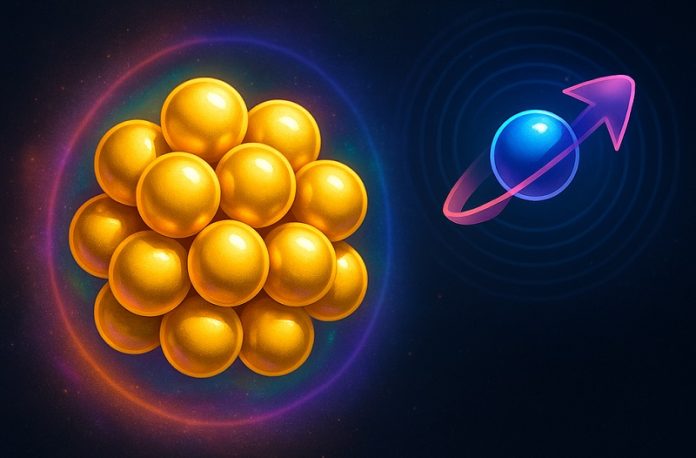
A team of scientists from Penn State and Colorado State University has made a major discovery that could help bring quantum computing and other next-generation technologies closer to reality.
Their research shows that small clusters of gold atoms—called gold nanoclusters—can behave just like the atoms currently used in highly accurate quantum systems.
Even better, these gold clusters can be made in large amounts, opening the door to scalable quantum devices.
At the heart of this discovery is the property known as electron spin. Just like Earth spins on its axis, electrons also spin, either in a clockwise or counterclockwise direction.
This spin—and how it aligns with the spin of other electrons—is essential for quantum technologies like quantum computers and sensors.
When many electrons spin in the same direction and maintain their alignment, the system is said to have high spin polarization, which helps maintain accuracy in quantum operations.
Until now, the most precise quantum systems have used trapped atomic ions in a gas.
These systems allow scientists to put electrons into special states called Rydberg states, where they can spin and exist in multiple states at once—something known as superposition. This is a core feature of quantum computing.
However, while effective, these gaseous systems are difficult to scale up for practical devices because they are very sensitive to environmental interference.
That’s where the gold clusters come in. Professor Ken Knappenberger, who led the research team, explained that their tiny gold clusters show the same spin properties as these complex trapped atoms—but with a big advantage: they’re far easier to make and use in larger systems.
These nanoclusters can be created in large quantities and are stable enough to be used in real-world technologies.
Each gold cluster is made of a core of gold atoms surrounded by other molecules called ligands. These ligands help protect the cluster and also influence its behavior. In their experiments, the researchers were able to identify 19 unique spin-polarized states in the clusters—similar to the spin states used in current quantum systems.
This means these clusters can be used to store and process quantum information.
The researchers also discovered that by changing the surrounding ligands, they could adjust the level of spin polarization. One type of gold cluster showed a spin polarization of 7%, while another with different ligands reached nearly 40%—a level that competes with some of today’s top quantum materials. This ability to “tune” the spin properties makes gold clusters highly flexible for different uses.
Nate Smith, a Penn State chemistry graduate student and lead author of one of the papers, said that these gold clusters act like “super atoms” because they not only mimic the electronic behavior of atoms but now also their spin behavior.
The team plans to continue experimenting with different ligands to fine-tune spin properties even further.
Their work not only demonstrates a powerful new tool for quantum technology but also shows how chemistry can play a big role in designing the materials that may one day run our quantum computers.



